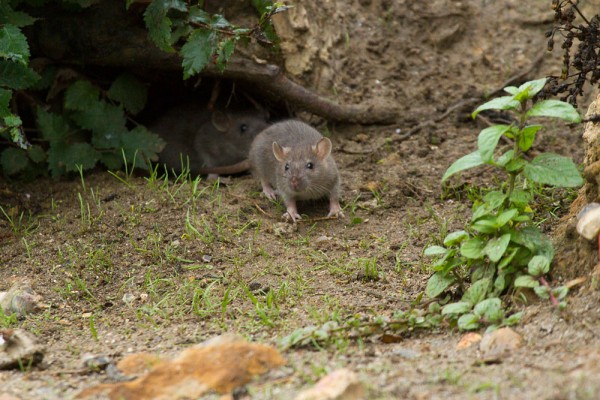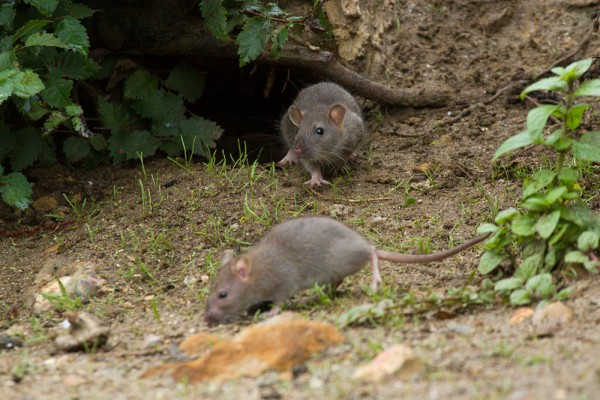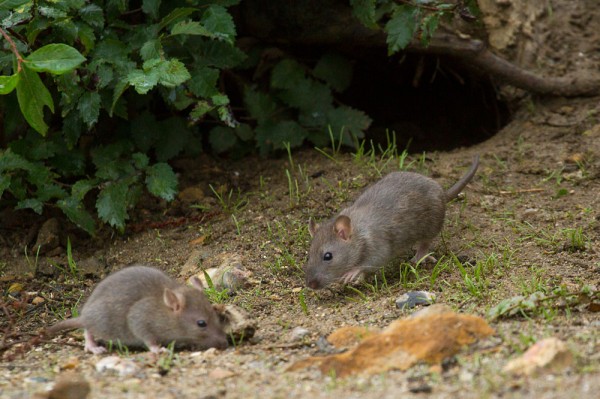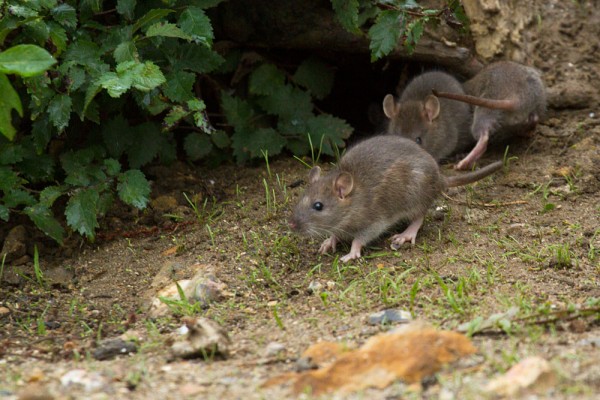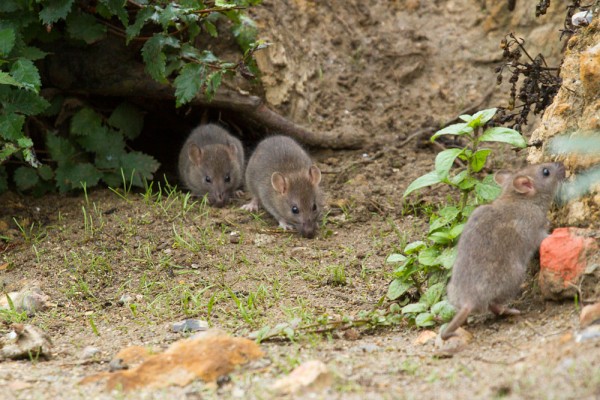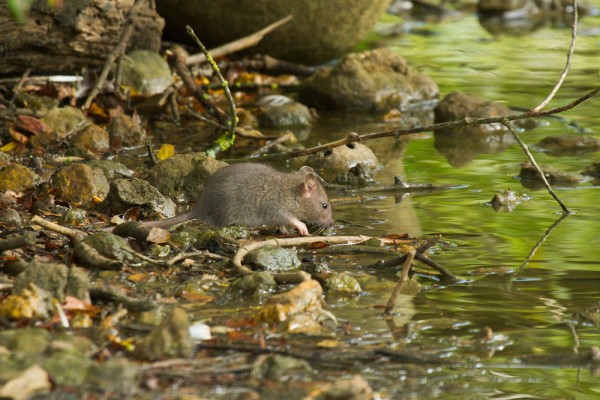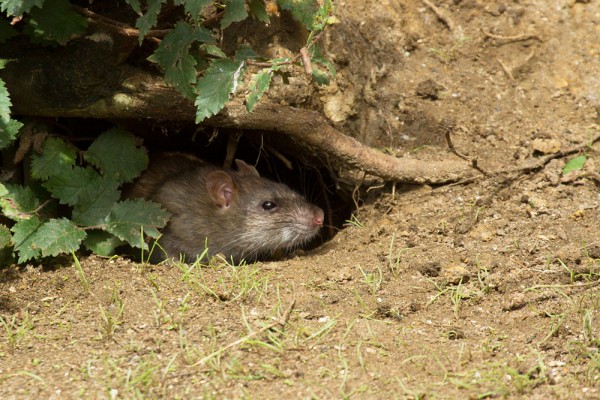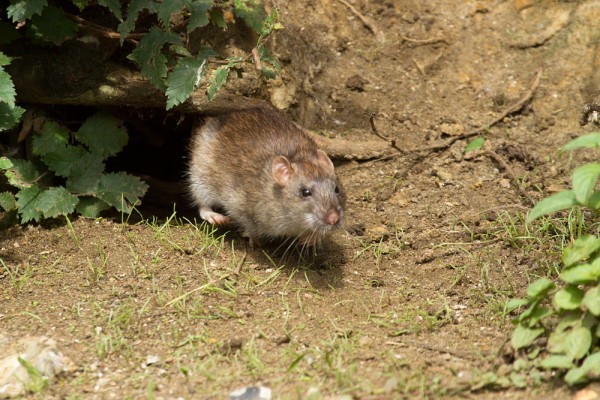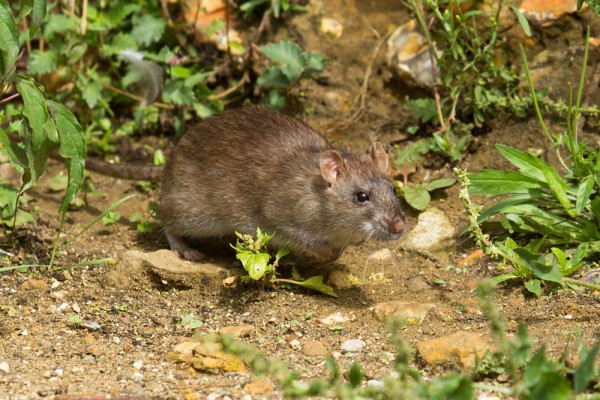It’s probably one of the acquired quirks of wildlife watching that the sight of a rat (and preferably several rats) fascinates rather than repels. Today was fascinating.
I was down at Falmer Pond early this morning and very quickly spotted some young rats scurrying around along the exposed bank of the pond. The low rainfall has left a broad dry mud beach between the bank and the water’s edge. The rats tend to stay near the bank where tehy have their runs and rat-holes, with plenty of cover under the scrubby vegetation. I parked myself at the edge of the water, and watched.
There were four youngsters scurrying around, though it was difficult to get them all in shot at the same time. At lunchtime, in much improved light, I tried again. I saw several more young rats, including a very young one down at the edge of the water, and a bold adult.
There’s a slightly more extended selection of today’s rats in the Falmer Rats 2013 gallery.
Badger Cull Update
Normally the rats would be more than enough for a single post, but last night’s trail cam footage was dominated by a species that is making headlines at the moment. We had several visits from a badger through the night. This one is safe from the cull at the moment, but we are in a target area so that situation may change if the cull is extended. There’s a #stopthecull feed at the side of this page which carries the latest on the cull. (Edit: it may have temporarily stopped working.)
The facts are that the cull will have at best minimal impact on bovine TB, and may make it worse. More shocking is that no tests are being carried out to determine whether any badgers are carrying bTB, and of over 5000 culled badgers only a tiny percentage will be evaluated for humaneness of kill. DEFRA – the government department responsible – has thus far refused to provide any information on how even that limited sample will be selected, but they have confirmed that in the vast majority of kills the evidence will simply be destroyed. Most kills will be wholly unmonitored. This is a shocking, unscientific, and wholly needless cull of a protected species. Please support the #stopthecull campaign in any way you can.
While some of the data is provisional, the most recent data published by DEFRA is that bovine TB in cattle is declining and that improved bio-security of our cattle herds is having a positive effect. Over 80% of disease transmission is cattle-to-cattle, and better bio-security combined with vaccination will clearly go a very significant way to producing effective control in both the livestock and wildlife populations. These are effective and sustainable interventions, unlike the current cull.
Locally there’s a campaign by the Sussex Badger Vaccination Project to provide vaccinations for badgers, which is likely to be a far more effective long term solution. Please consider supporting them.
[embedplusvideo height=”337″ width=”600″ editlink=”http://bit.ly/15DJN7B” standard=”http://www.youtube.com/v/LyPvlZiV8Z8?fs=1&hd=1″ vars=”ytid=LyPvlZiV8Z8&width=600&height=337&start=&stop=&rs=w&hd=1&autoplay=0&react=1&chapters=¬es=” id=”ep9052″ /]
Camera note: all shots taken with the Canon 7D and EF 100-400mm f/4.5-5.6L USM IS lens.
